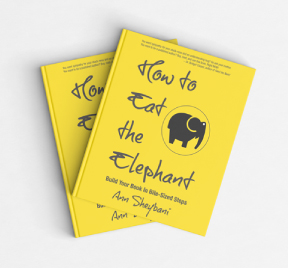Writing
More On Blogging
December 29, 2015
I got a few great questions after my last post on blogging. Looks like it’s time to do another webinar on the process, but for now, I thought I’d share my answers here.
How did you attract people to your blog when you were in the early stages?
Each time I posted a blog, I shared the link on Facebook. This took guts because I had a lot of writing friends from Harvard out there, or so I imagined, and I was sure they’d read my posts and decide I was a total hack. I felt like I was cheating because I wasn’t working on my book. I also put my website address in my email signature. You’d be surprised how many people click on a link like that and explore. I probably didn’t get many views until I started including bits of blog posts in my newsletter, accompanied by a link. It takes time to build an audience. The first time you put a post out there is always the hardest, though.
Can blogs be shared on a personal Facebook page?
Yes, of course. Only your friends and followers can read them, however. I made the decision to have a public Facebook page for this very reason: I wanted a bigger reach. That’s why we write, after all, to be read. I learned to be OK with total strangers coming to my page and learning all sorts of things about me. That, too, took some getting used to, because people aren’t always very nice. Believe it or not, I’d always considered myself a very private person before Facebook came along. I still am in many ways. Because of that, I’m very aware of what I post. I don’t talk about my kids, or who I’m mad at, or gossip, or take snapshots of my dinner, because I’m consciously using my page as a public platform.
Can blogs be shared on Twitter and Linkedin?
Yes they can. In Twitter, you create a link that will lead the reader/follower back to your blog post. On Linkedin, you can slip your blog content into Pulse, which is a very powerful format. Think cut and paste. (Quite frankly, if you don’t want to mess around creating a website to host your blog, you can share a lot of your writing on Pulse. In other words, you can use LinkedIn as your server.) I’ve seen some people drop the link alone into a Pulse post, but I’ve never found this very inviting. I’m not inclined to click on a naked link. I like to read the content right there in the stream. If you’d like your reader to visit your site, you can put some of the content in the Pulse post, via cut and paste, then encourage them to read more by clicking the (included) link to your site, very much like I do in my newsletter.
How does one get their blog noticed?
You get your blog noticed by writing on a consistent basis about topics that interest people. (Wish it were more complicated than that.) Posting on social media helps a lot too, because that’s where readers and writers congregate. Soon people start commenting on your posts, and sharing them. But that generally doesn’t happen right out of the box. You just have to keep showing up, putting it out there, even when you’re convinced no one alive gives a rat’s ass what you think. Start noticing what things ARE being shared and commented on, not just your own posts, but those of others. Throw your thoughts into the mix as well. Comment on other people’s posts. What goes around, comes around. It’s all one big conversation anyway.
How does one get to guest post?
Two ways. You get invited to post by the blogger because they’ve read something you’ve written and they consider it relevant to their audience, or you ask if you can submit and are accepted. The most important thing you have to keep in mind is this: your style of writing, your take on life, the handful of topics you tend to write about, are not a fit for every venue. Pay attention to the message, the covered topics, the tone, and the targeted audience of a blog site before you ask to serve as a guest poster. No one likes to reject another writer, or to be rejected. Know that there’s nothing personal if you get turned down, or if your post gets kicked back to you for major edits before it’s published. When you find a venue fit, reach out and ask. It won’t kill you. Most blog sites are grateful for valuable content.
Do pictures, which are used on a blog, have to be designated as “free” stock? If you use Google images on your blog, is that considered pirating?
This is an excellent question. For years I pulled photos for my blog off of Google images and other photo sharing sites. I never asked for permission. I figured if it was out there in the world, if it didn’t have a watermark on it, or a copy rite symbol, it was fair game. It was only when Walt defended a client for copy rite infringement that I realized how wrong I was. The client ended up paying hundreds of dollars in fees for each photo he had–how did you phrase it?—pirated. YIKES. All that being said, you’llwant to have an image embedded into your blog post, if only to encourage readers to click on your link, especially on social media sites. You’ll want to play it safe and avoid pulling them from random sources. You can take your own picture, which you’ve stored on your desktop or in your hard drive, or create a compelling image using sites like Canva, Like I did in this post. One picture a post should do you just fine.



